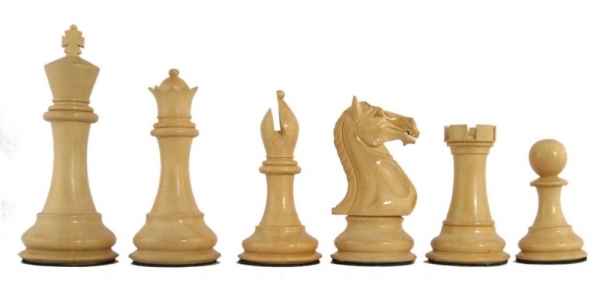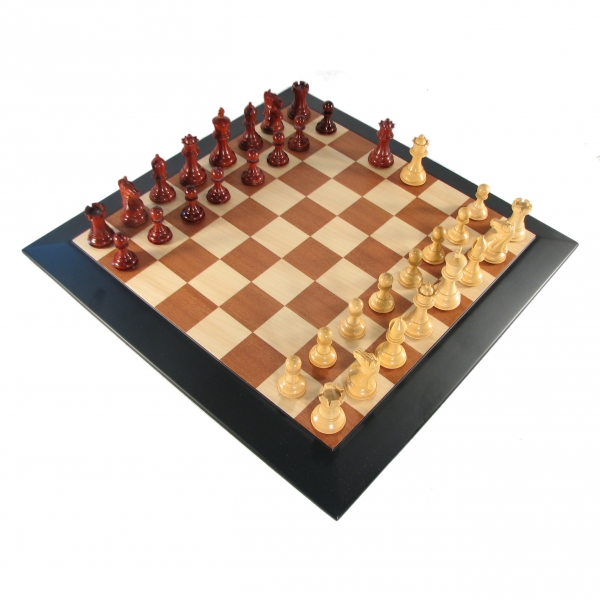The Staunton Design – Tradition Chess Pieces
One question that comes up a lot in both the chess store and the emails we receive at our website is about the term ‘Staunton’. Chess players may know Howard Staunton as a top British chess player in the 19th century, and all know the staunton design for chess sets. However, when you are looking for a gift for a friend or loved one, and they ask for a “Staunton Chess Set” confusion can reign!
The reality is, it is not just professional chess players that are familiar with Staunton style chess pieces – everyone is! When you think of a regular chess set, you’re thinking Staunton. The king is the tallest piece with a cross on his head. The bishop has a slit in the top. The knight is a bust of a horse, and the rook looks like the tower to a castle.
It’s really that simple. If someone is asking for a Staunton chess set, they just want the same chess set we all know from the inexpensive chess set we first played on as a child. The chess sets that are not staunton are considered “theme” or “figurine”. Often those chess sets are hard to play on because you do not know which piece is which – it would be terrible to be playing a chess match and to realize the golfer chess piece you just attacked that you thought to be a bishop was really a knight and you lose an important position!
Chess players encountered this problem pretty early on – As chess grew in popularity in the 19th century, it became increasingly important to create a standard design so all chess players, regardless of nationality or upbringing, would be on a level playing field when playing chess. The styles were varied, expensive, and complex – not to mention overall regional differences in style.
Many chess enthusiasts are familiar with the name John Jaques. He was determined to create a standard design for chess, and was already in the business of supplying chess in London and throughout England. In early 1849, Jacques brother-in-law Nataniel Cook registered a design for chessmen. By the Autumn of the same year, Jacques & Son of London had secured the rights and were selling this new design following an advertisement in the “Illustrated London Times”. Cook was the editor of that paper, and Howard Staunton was also involved with the paper, so he convinced Staunton to put his name to the new design style – and the standardized form of traditional chess pieces had been adopted.
The chess pieces by Jaques, Cook, and Staunton were hugely successful and eventually accepted as an international standard. Indeed, you cannot play in a tournament without using Staunton design chess pieces – of course, there are many variations with even this standard. The term has evolved from a particular set to the design structure above, meaning that there are countless variations of Staunton Design – different knights being the most common. This allows us to still have very individual chess sets but know that whomever we play against will still know which piece is which.
So just remember – if someone is looking for a “Staunton” chess set, the search is a lot easier than you may have thought. (or more difficult!) All traditional chess sets follow the Staunton Pattern, and the terms are used interchangeably. They come in different sizes, woods, and range from plastic staunton chess pieces for under 10.00 to weighted wooden hand-carved chess sets starting at under 100.00 and range upwards to several hundred dollars for hand-carved Staunton chess sets made from exotic hardwoods. They are all Staunton. The difference is just size, material, and detail!
An old colleague of mine wrote a bit about Staunton on our FAQ page, which you can see here:


Kooolnessssss
Wooden Staunten chess pieces made in the USA?
Unfortunately, almost nothing chess related is made in the US anymore. The biggest manufacturer domestically was Drueke, but they stopped making chess boards a few years back. Also, they imported the wooden chess pieces as well!
Closest is the training set we carry that is made up in Vermont – but they are not staunton (more blocks of wood with staunton pictures engraved)
The “traditional” chess piece designs are boring, uninspiring. Same old, same old. Breaking from tradition in itself is not a worthwhile response and is usually attractive because of their novelty and not how they stimulate “Chess Thinking.” So, what is a solution? Good answer/question. A sophisticated and mature design that maintains enough of the well established, customary shapes which we are all used to must be respected. Too much of a deviation can be distracting. Next, using that platform, a carefully thought out design can be accomplished that does not challenge nor distract “Chess Thinking” but relaxes and facilitates it. A new and novel idea and structure can facilitate the kind of creative and original thinking that we find so attractive in a centuries old tradition
Respectfully submitted. Joseph Kern: Artist,sculptor,writer,designer,musicion.